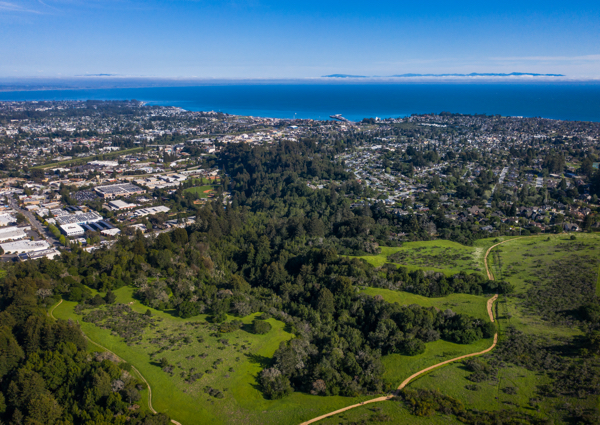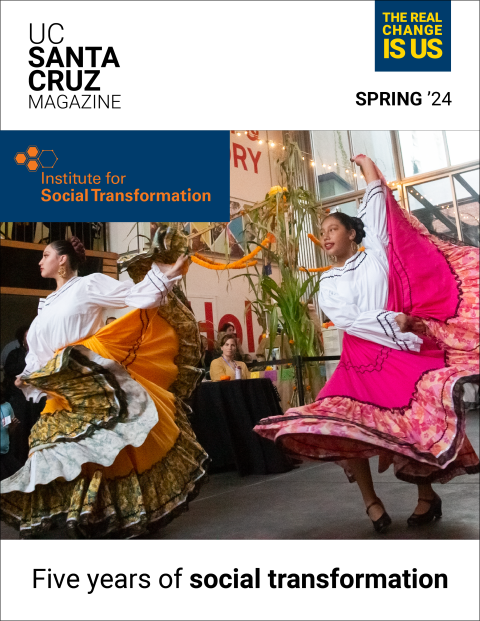Beyond its transformational research and enriching education of California’s future leaders, UC Santa Cruz creates vast opportunities in the Monterey Bay region for people to live, work, and thrive, according to a University of California systemwide economic impact analysis released today.
When adjusted for the size of the Monterey Bay regional economy, UC Santa Cruz’s economic impact is second only to UC Davis in the Sacramento/Tahoe region and ahead of UC Santa Barbara in what is defined as the Central Coast of California.
The report, “Economic, Fiscal and Social Impact Analysis,” was commissioned by the UC Office of the President and prepared by Beacon Economics, an independent research and consulting firm based in Los Angeles.
Beacon Economics found that the University of California contributes roughly $82 billion annually to California’s economic output. More than a half-million jobs in California — or one in every 45 — are supported by the University, and UC-related spending generates nearly $12 billion annually in federal, state and local tax revenues.
The report underscores how the university creates fertile ground for entrepreneurship and innovation that serves the entire region, said Chancellor Cynthia Larive.
“This comprehensive report very clearly shows the broad and deep contributions that UC Santa Cruz brings to the community that we are proud to be a part of,” Larive said. “Our campus creates an economic foundation that supports long-standing industries as well as emergent ones. We want our region to enjoy long-term innovation that offers compelling reasons for the area’s children to remain here for their adult lives.”
In the greater Monterey Bay area, identified as the local economic region for UC Santa Cruz, the study found that 18,021 jobs can be directly linked to the campus, generating labor income of $892.5 million. This includes direct full-and part-time jobs on and off campus held by faculty, staff, and students. It also includes indirect jobs in the community not part of UC’s payroll but that are created because of UCSC’s presence. The campus accounts for another roughly 1,200 jobs in other parts of the state.
Of the 18,021 regional jobs that the campus generates, as of April 2020, 8,266 were directly related to campus operations, including 2,928 academic and 5,338 staff positions, which include 2,562 student staff.
This report quantifies UC’s economic and fiscal contributions to California, revealing the high return on investment to California from state and federal funds. UC Santa Cruz is responsible for contributing $190 million in federal tax revenue and $131.4 million in state and local taxes for the region.
In total, UC Santa Cruz added $1.35 billion in value to the region’s economy and helped create more than $2 billion in economic activity, Beacon Economics concludes.
“UC’s economic ripple effect is so large that it touches every region in the state, including those without a campus or medical center,” said UC President Michael V. Drake, M.D. “Beyond economic impact, the University’s contributions in health, innovation and social equity are even more important to the lives of Californians.”
The Beacon Economics study looked at the university’s impacts on society including the effects of higher incomes that the university’s graduates receive. Social impacts include UC’s role in enhancing human capital, research and innovation (such as how investment in UC research has leveraged the founding of 1,239 startups by UC alumni to date), fostering economic growth and community development, and improving health care outcomes for millions across the state.
The economic impact study reaffirmed that UC is a world leader in innovation, averaging five
inventions every day. In fiscal year 2019, UC received over 500 patents, bringing the University’s total to over 5,000 active U.S. patents and nearly 6,000 foreign patents. This reputation for excellence attracted nearly $6 billion in federal, state and private research awards to the University in fiscal year 2019 alone.
UC Santa Cruz attracted $189.8 million in research funding for the year that ended June 30, 2020, an all-time high and a 14.4 percent increase over the previous year, according to a soon-to-be-published annual report by the UCSC Office of Research. Sixty five percent of research grants came from the federal government. In the same period, campus researchers were awarded 20 patents and applied for 31. UCSC currently has 154 active patents.
The University of California is the state’s third-largest employer (behind only the state and federal governments), directly employing about 228,824 full- and part-time faculty and staff as of April 2020. UC’s budget, $37.2 billion in fiscal year 2018-19, supports its mission to uphold a gold standard in teaching, research, public service, and fostering economic growth throughout California.



